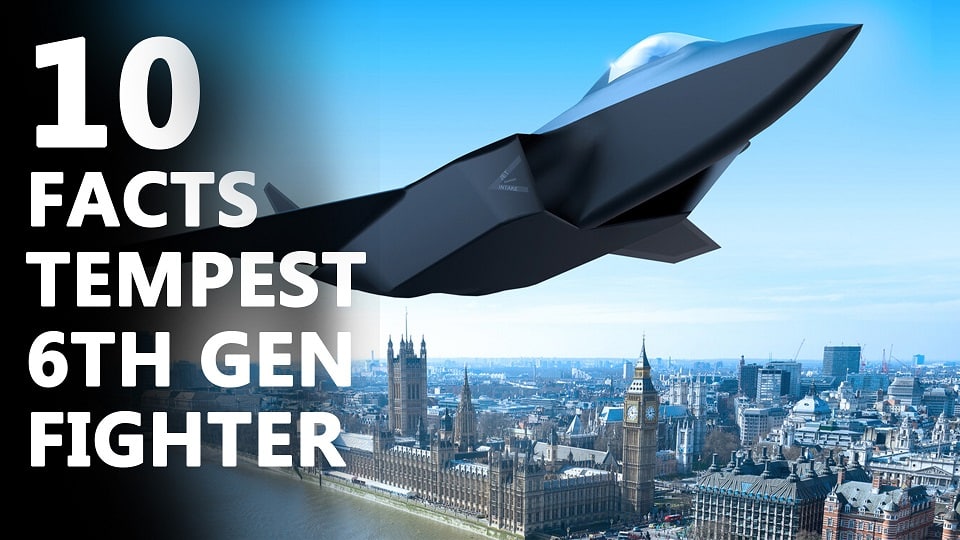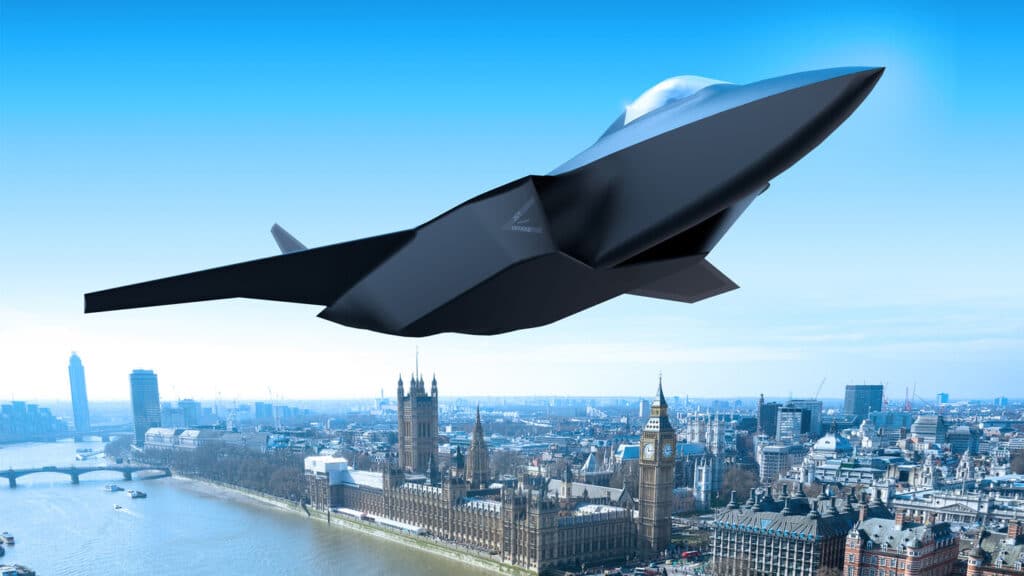Aerospace
10 Facts about the Tempest 6th gen fighter jet.

we’ll look at 10 fascinating facts about the sixth-generation fighter plane that the UK, Japan, and Italy are working to develop.
1. UK, Italy, and Japan announced a sixth-generation fighter.
The UK has revealed plans to produce the 6th Generation fighter jet in cooperation with Japan and Italy with a shared ambition to develop a next-generation fighter aircraft as part of a new Global Combat Air Programme (GCAP). It is a more lethal combat jet now that the UK and Japan have finished developing cutting-edge technology.
Meet Japan’s 6th Gen Fighter jet and its mind blowing features(Opens in a new browser tab)
2. The UK has a number of superpower corporations, including RR, MBDA, and BAE.
The program is being developed closely in conjunction with the BAE System, which offers an electronic system, the MBDA, which offers next-generation armaments, and Rolls-Royce, which is producing the aircraft’s engines. A number of next-generation future combat air system capabilities are currently being evaluated and developed by the UK under the Tempest program, which is already in the development phase of the 6th generation fighter jet.
UK industry to play key role in new Global Combat Air Programme(Opens in a new browser tab)
3. Fighter aircraft with a loyal wingman.
Global Combat Air Program This aircraft will operate under the crew and uncrewed system that can be operated under the closed network group, just like every other sixth-generation fighter. “Loyal Wingman” platforms will be a part of a micro air group in a system of systems strategy.
4. The key technology birth is GCAP vs. FCAS.
The FCAS program is being created by the Airbus team with assistance from France, Germany, and Sweden, as the European Union declared, in order to compete with the GCAP program, which is being developed under the guidance of the United Kingdom. Although the two fighter jets will share certain similarities, they will have different qualities. The UK will profit financially from this investment in aircraft development and pick up new capabilities for building planes.
5. The best technology for fighter jets will be brought in large part by Japan.
Japan has already developed and built a number of demonstration aircraft. The first experimental Stealth technology demonstration for the sixth generation of aircraft is the Mitsubishi Heavy Industries-built X2. This aircraft is used to learn stealth technology and prototypes. The X-2 successfully completed its first flight on April 22, 2016, flying from Nagoya Airfield to the JASDF’s Gifu Air Field.
6. For this fighter, Japan is introducing 3D vector thrust technology.
This aircraft’s engine nozzle, which includes 3D thrust vectoring similar to the system used on the Rockwell X31, is being added by Japan. This allows for quick aircraft movement and supports a variety of flight trajectories. Additionally, thanks to the display of fly-by optics, a capability unique to this aircraft, the data are processed 100 times faster than with wires. Due to its immunity to electromagnetic interference, it has benefited.
7. This aircraft has an automatic repair flight control system.
Additionally, Japan adding This aircraft also has the capacity to repair its own flight controls, enabling it to detect flaws or damage to its flight control surface on its own. maintain, adjust, and carry out controlled flight. It will have a radar system that is comparable to the F 35’s. Japan has conducted research on the airframe construction of its aircraft, eliminating fasteners and replacing them with solid adhesive bonding. Additionally, its surface will have a special covering that can lessen radar reflection.
8. Incoming missiles are deflected by microwave weaponry.
A microwave weapon will also be placed on the F-X by Japan in order to deflect incoming missiles. This aircraft has a drone control system that interacts with the Boeing wingman drone control system. When compared to using drones, which can be fired from an aircraft’s weapons bay to reach and target the enemy at a great distance, this will be a breakthrough in operating a greater range.
9. The initiative will enable the UK to create 21,000 employees in ten years.
How the UK benefited from the initiative. It will gain knowledge of the creation of airplanes as well as rights to patents on the technology, which may potentially lead to the development of other products. It will also create 21,000 jobs in the next 10 years and strengthen the economic reform of exporting such goods. As part of the agreement, the bulk of aircraft will be developed in the United Kingdom.
10. Tempest will replace their fighter in the UK, Japan, and Italy.
The addition of Japan will also increase economies of scale, as its own F-X sixth-generation fighter program was intended to replace about 90 F-2 planes starting in the mid-2030s. With the potential for up to 100 aircraft, the UK has long been aiming to replace its Eurofighter Typhoon FGR4 platform with what is now the GCAP starting in the middle of the 2030s. The GCAP will also take the place of Italy’s Eurofighters.

Aerospace
When Ratan Tata was denied entry to the airfield at the Aero India show, he waited

During our visit to Aero India 2019, we had the unexpected opportunity to see Ratan Tata at the event, which was a thrilling moment for us. However, there was a surprising hiccup when the security staff didn’t allow him to enter due to a lack of a security pass.
Despite this, he remained calm and patiently waited for about 20 minutes until a member of the Tata team brought him the required pass, after which he calmly proceeded inside. It was a humbling sight, showcasing his composed demeanor even in such situations.
Ratan Tata ji is not only a renowned industrialist but also a trained pilot, holding a pilot’s license. In 2007, he became the first Indian civilian to fly the F-16 Falcon during the Aero India show in Bangalore—a proud moment for the nation.
His passion for aviation extended beyond flying, as he played a key role in shaping India’s aerospace industry. Under his leadership, Tata ventured into manufacturing and maintaining aerospace components while upholding its legacy of quality. Notably, Tata’s collaboration with Airbus to develop and manufacture the C295 aircraft is a testament to its growing influence in the sector.
-

 Aviation2 months ago
Aviation2 months agoMicrosoft Flight Simulator Raises $3 Million to Bring Back the An-225 Mriya
-

 Airlines2 months ago
Airlines2 months agoQatar Citizens Can Travel to the United States Without a Visa
-

 Aviation2 months ago
Aviation2 months agoQatar Airways bans these new Electronic Devices on plane
-

 Airlines2 months ago
Airlines2 months agoJapan Airlines Rolls Out Free Domestic Flights to International Passengers
-

 Travel2 months ago
Travel2 months agoQatar Airways Launches Four Additional Flights from Amsterdam
-

 Defence2 months ago
Defence2 months agoWhich Country Has the Largest Fleet of Fighter Aircraft?
-

 Airport2 months ago
Airport2 months agoWestern Sydney Airport Welcomes Its First Plane After 6 Years of construction
-

 Airlines4 days ago
Airlines4 days agoDAMAC Air: Dubai’s New Luxury Airline Offers Free Flights for Registration











